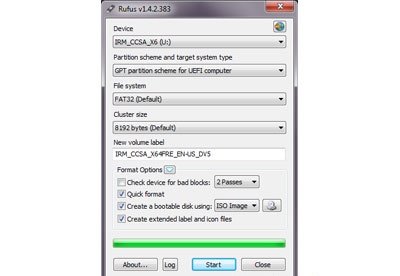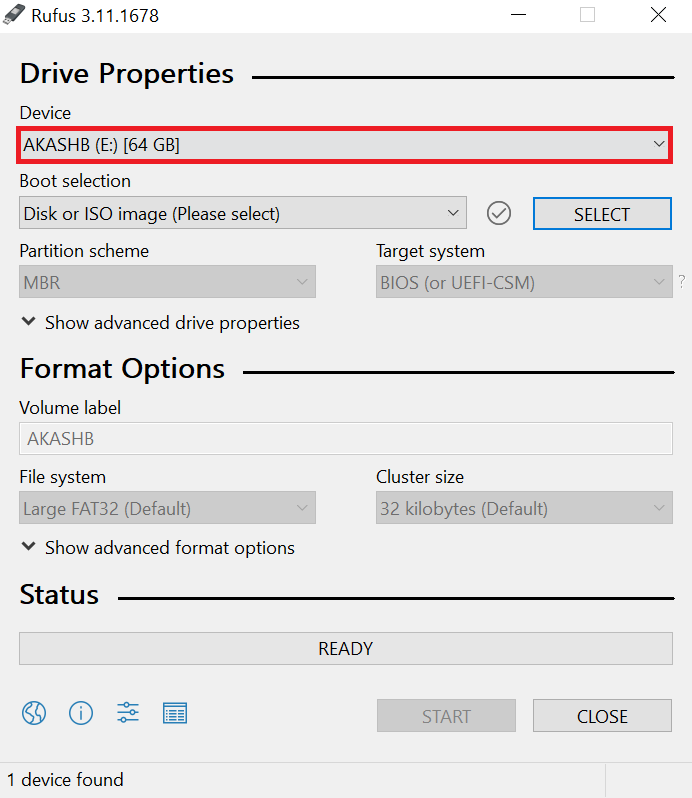

If you just copy the files onto a FAT32 partition as per the guide you pointed out, this will be the case, but it will not be the case when using UEFI:NTFS from Rufus.

Rufus' UEFI:NTFS will only work if you have Secure Boot disabled, because the UEFI:NTFS bootloader is not signed by Microsoft, and your symptoms could easily be explained with the HP "BIOS" having Secure Boot enabled, and only allowing boot from USB if the UEFI boot loader it sees is signed. Yes, I tried booting the USB created with Rufus 2.3Īre you sure you have Secure Boot disabled then?
#Rufus usb 32 bit
Unlike I don't believe you have a 32 bit UEFI firmware. Yes, that's why I said issue was not the same.
#Rufus usb 64 Bit
My Laptop runs Windows 10 Home 64 bit perfectly! I have no way to upgrade this machine to a 64 bit OS or reformat it. I'll try to buy some time to continue working with it. This wouldn't be that serious of an issue except I can't get it to boot properly and my customer expects me to fix it ASAP. I can't run the windows installer directly because the exe is 64 bit and the laptop has 8.1 32 bit installed even though it is 64 bit capable. (Not that I though it really would).Īnd also UEFI MBR NTFS which has the same result as UEFI GPT NTFS. This created a second identical bootable device which also didn't work. So I took 'bootia32.efi' from the FAT partition named UEFI_NTFS and put it with 'boot圆4.efi'.

I figured maybe it was my ISO and sure enough 'bootia32.efi' was not in 'efi\boot\bootia32.efi', only 'boot圆4.efi' was. Launching NTFS EFI loader 'efi\boot\bootia32.efi'. Loading the first NTFS partition on this device.


 0 kommentar(er)
0 kommentar(er)
